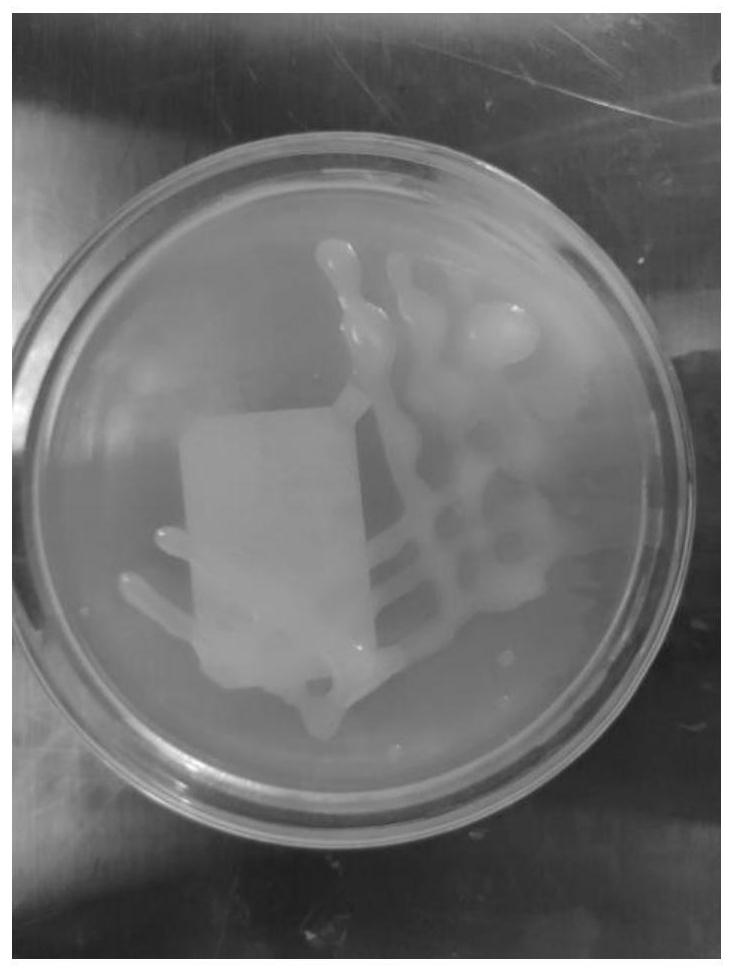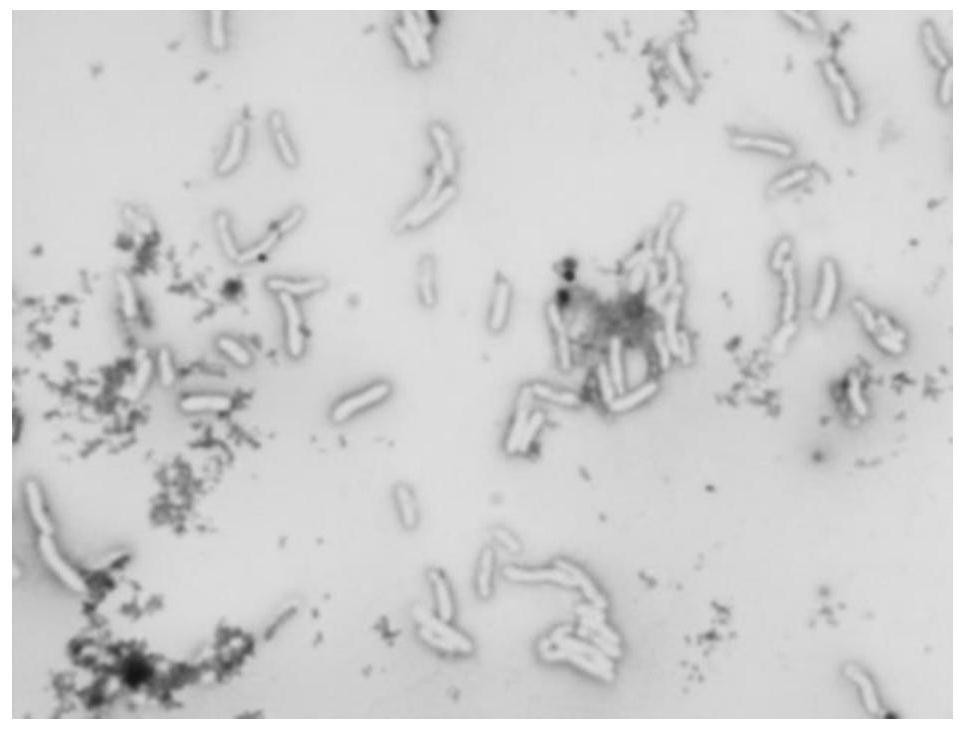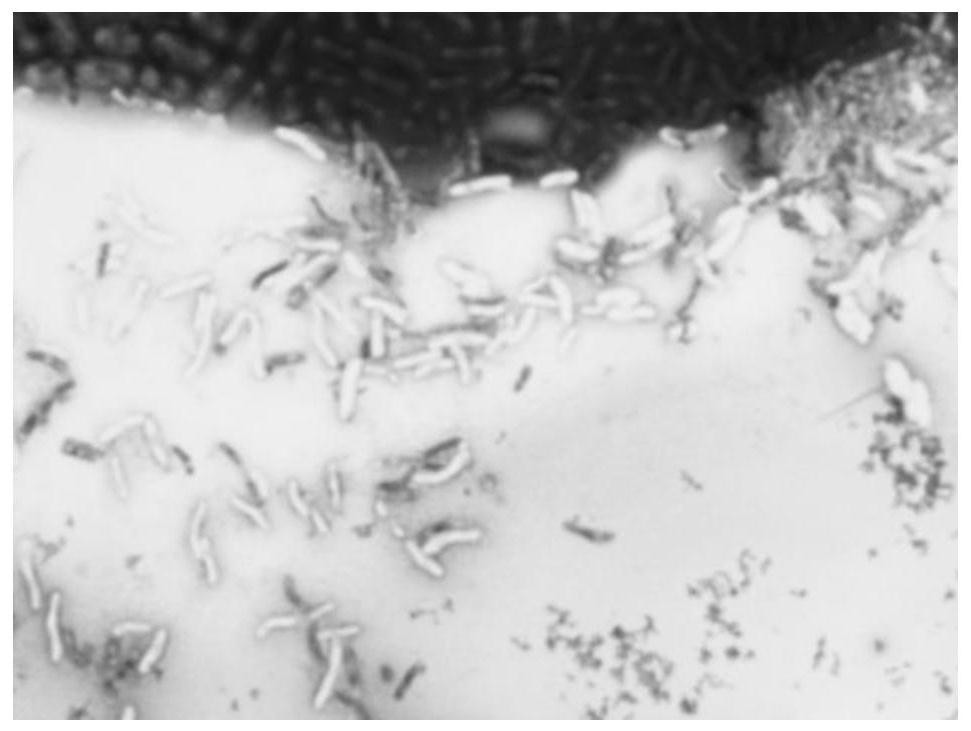Pseudomonas capable of oxidizing antimony and arsenic and application of pseudomonas
A technology of antimony arsenic oxidizing pseudomonas and pseudomonas, which is applied in the field of microorganisms, can solve the problems of less research, and achieve the effects of simple culture conditions, easy storage, and good development and application potential
- Summary
- Abstract
- Description
- Claims
- Application Information
AI Technical Summary
Problems solved by technology
Method used
Image
Examples
Embodiment 1
[0031] Example 1 Isolation and screening of highly efficient antimony arsenic oxidative pseudomonas DHHN0901
[0032] The bacterial strain of the present invention belongs to the genus Pseudomonas, Pseudomonas sp., and the strain name is DHHN0901. The strain is isolated and screened from the flower bed loess near the slag heap of the Xikuangshan Smelter in Lengshuijiang City, Hunan Province, and specifically obtained by plate marking screening. The screening method belongs to the conventional experimental method for strain isolation and screening in the field.
[0033] The specific method and process are described as follows: Weigh 10g of soil sample and add it into a 250ml sterilized conical flask; soak in 90ml of sterile water, shake it on a shaker at a temperature of 30°C for 30min, and let it stand for 30s; use serial dilution to coat Bacteria were isolated by the method, and after single colonies were selected, they were streaked and purified on the solid medium, and the ...
Embodiment 2
[0037] Example 2 Antimony resistance performance test of highly efficient antimony-arsenic oxidizing bacteria DHHN0901 (solid medium)
[0038] Lines were drawn on the CDM solid medium with different antimony concentrations, and cultured in a constant temperature incubator at 30°C to measure the resistance to antimony. Three replicate groups were set up for each group. The high-efficiency antimony-oxidizing bacteria DHHN0901 can grow normally on the solid medium containing antimony concentration of 0-8000mg / L, and the antimony concentration is 9000mg / L. The growth is extremely slow and hardly grows.
[0039]Compared with other research reports, Pseudomonas DHHN0901 has higher resistance to heavy metal antimony than other reported microorganisms. The strain lived in heavy metal polluted areas for a long time, and its strong resistance to heavy metal antimony may be related to its complex living environment.
Embodiment 3
[0040] Example 3 Molecular, Physiological and Biochemical Identification of Efficient Antimony Arsenic Pseudomonas Oxans DHHN0901
[0041] 1. In this example, the Pseudomonas (Pseudomonas) DHHN0901 of the present invention is tested and analyzed by 16S rRNA sequence.
[0042] 16S rRNA related identification method:
[0043] Use the bacterial universal primers to carry out PCR identification on the screened bacterial strains: extract the template DNA according to the operating instructions of the bacterial DNA extraction kit. Using the upstream primer M13F (TGTAAAACGACGGCCAGT) and the downstream primer M13R (CAGGAAACAGCTAT GACC) of the 16S rRNA conserved sequence, the 16S rRNA gene fragment of Pseudomonas (Pseudomonas) DHHN0901 was amplified by PCR, cloned and sequenced.
[0044] After sequencing, a fragment of 1485bp was obtained, and the accession number in GenBank was MN720563. After sequencing, it was found that the bacterium belonged to Pseudomonas, and the sequencing res...
PUM
 Login to View More
Login to View More Abstract
Description
Claims
Application Information
 Login to View More
Login to View More - R&D
- Intellectual Property
- Life Sciences
- Materials
- Tech Scout
- Unparalleled Data Quality
- Higher Quality Content
- 60% Fewer Hallucinations
Browse by: Latest US Patents, China's latest patents, Technical Efficacy Thesaurus, Application Domain, Technology Topic, Popular Technical Reports.
© 2025 PatSnap. All rights reserved.Legal|Privacy policy|Modern Slavery Act Transparency Statement|Sitemap|About US| Contact US: help@patsnap.com



